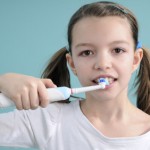
Powered toothbrushes have been shown to reduce plaque and gingivitis more than manual brushing (Robinson et al). This systematic review looked at the the relative soft and/or hard tissue safety outcomes with the use of oscillating-rotating toothbrushes compared to manual toothbrushes.
Medline, the Cochrane Central Register of Controlled Trials (Central), and the Embase, were searched for in vivo and in vitro trials conducted to identify appropriate studies that evaluated the effects of an oscillating-rotating power toothbrush compared to a manual toothbrush with respect to soft and/or hard tissue safety. Eligible trials were those incorporating a safety evaluation as a primary or secondary outcome parameter (i.e. gingival recession, observed/reported adverse events, and hard tissue effects) or used a surrogate parameter (i.e. stained gingival abrasion and brushing force) to assess safety.
Following independent screening 35 publications were found to meet the eligibility criteria. The mean change in gingival recession was not significantly different among toothbrush groups in the two selected trials with safety as a primary outcome (weighted mean difference: 0.03). A meta-analysis of the five trials that evaluated safety with a surrogate parameter was not possible; however, there were no significant between-group differences at the study end in any trial. A descriptive analysis of the 24 selected studies assessing safety as a secondary outcome revealed few brushing-related adverse events. The heterogeneity in objectives and methodology of the four in vitro trials that met the eligibility criteria precluded generalization of the results.
The authors concluded :
A large body of published research in the preceding 2 decades has consistently shown oscillating-rotating toothbrushes to be safe compared to manual toothbrushes, demonstrating that these power toothbrushes do not pose a clinically relevant concern to hard or soft tissues.
Van der Weijden FA, Campbell SL, Dörfer CE, González-Cabezas C, Slot DE. Safety of oscillating-rotating powered brushes compared to manual toothbrushes: a systematic review. J Periodontol. 2011 Jan;82(1):5-24. Epub 2010 Sep 10. Review. PubMed PMID: 20831367.
